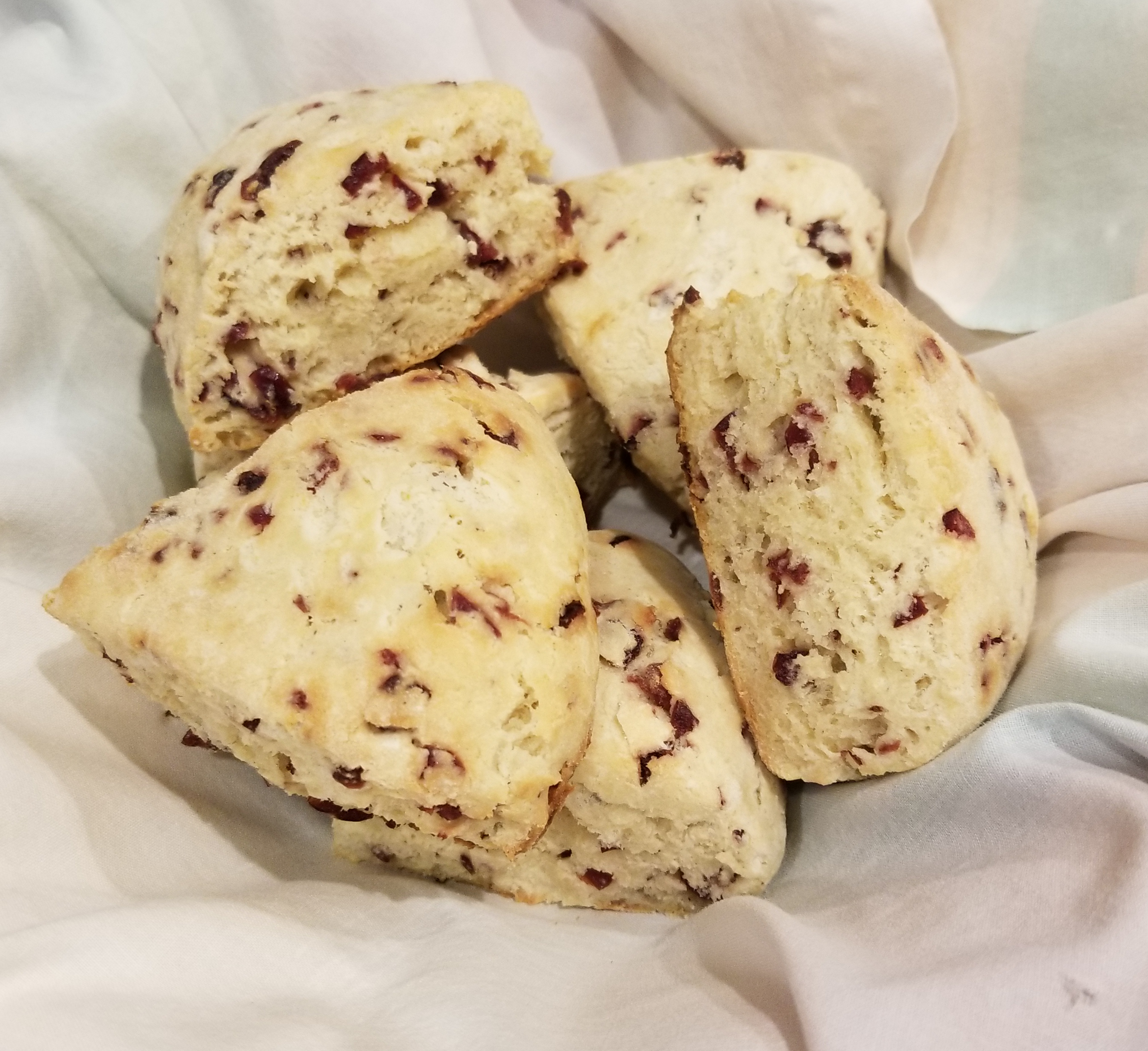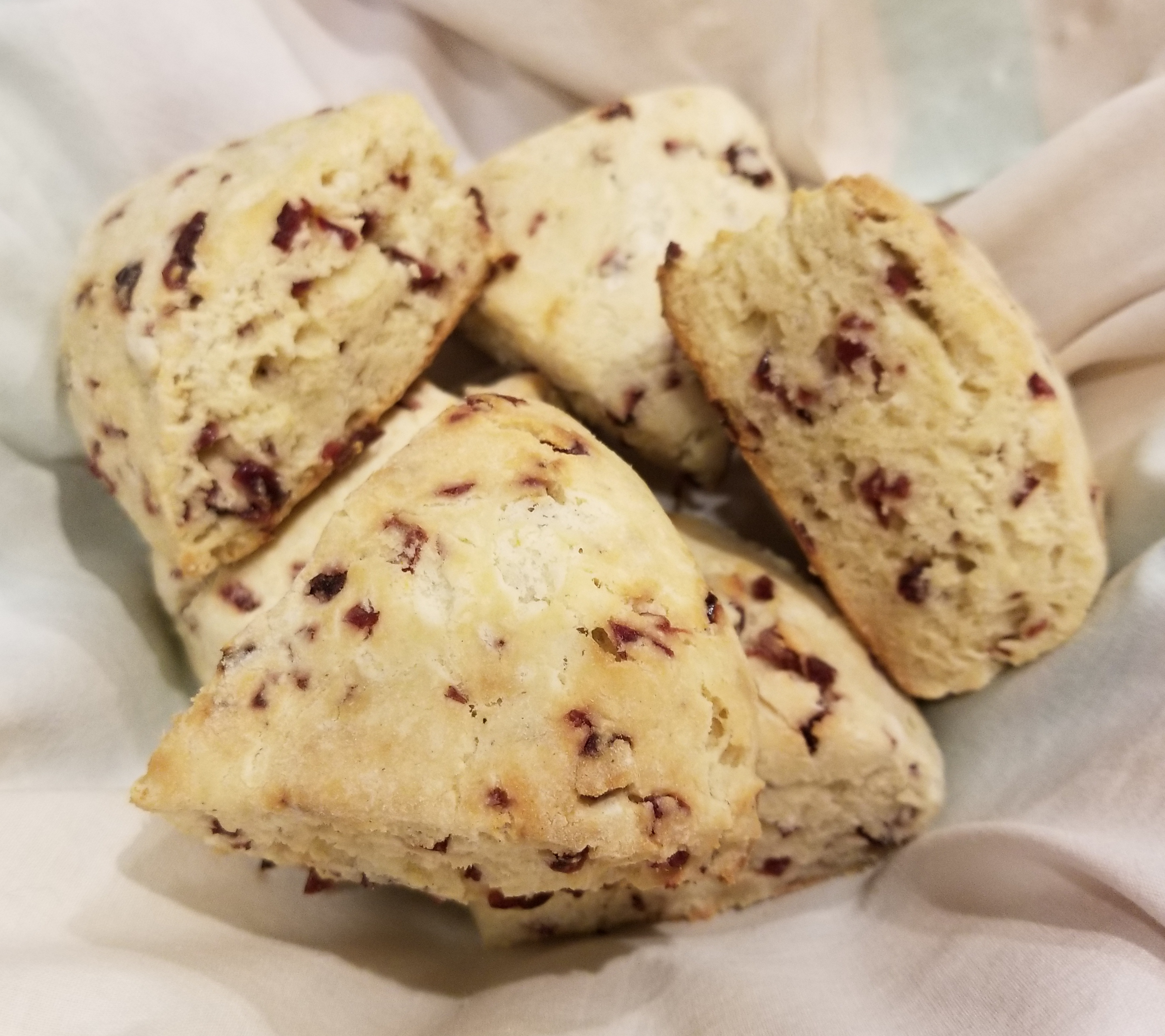In which a vast number of scones are baked and eaten. And there is great rejoicing in the land.
It happens at least once a week. The algorithm that decides what I want to read turns up an article with a title like "Twelve Kitchen Gadgets That Will Change Your Life" or "Seventeen Cakes for Spring". Last week, it was "You've Been Making Scones All Wrong". Of course, I clicked on it.

The general thrust of the article was that chilled butter is the key to the best scones. The scones should be made with cold butter, to avoid "having the butter melt while working it in". Furthermore, the scones should be chilled before baking, to firm up the butter that has softened during preparation. This, it was claimed, is the key to really flaky scones.
I was intrigued: after all, who doesn't want to make better scones? But I was also skeptical. My usual practice with scones is to start with butter at room temperature. My kitchen is usually around 72 F, and room-temperature butter is a little soft to the touch, but a long way from melting. My main objection to using chilled butter is the bother of it all. When I make scones or biscuits, I use a humble pastry blender to cut in the butter. Chilled butter is good way to ruin your pastry blender; the only reasonable way to cut in chilled butter is using a food processor. That's not difficult, but it does seem like a lot of fuss for a few scones. But hey, if it really makes better scones, it would be completely worth it!

In the end, it seemed like there was only one way to resolve the dilemma: a side-by-side comparison of different methods. (The Resident Food Critic [TRFC], who loves scones, heartily endorsed this idea.) So, I made three batches of scones. Batch A used chilled butter, and the scones rested in the refrigerator before baking. Batch B started with room-temperature butter, but the scones were also chilled in the refrigerator before baking. This, if it worked, would give me the best of both worlds. Batch C was my control batch: I used room-temperature butter and let the prepared scones sit out on the counter while I pre-heated the oven. Then I baked all three batches at the same time, and we tasted the results.

I should add that I used the same basic scone recipe (my mini-chocolate-chip scones) for all three batches. It would have been more scientifically precise to make plain scones, but I couldn't face the thought of eating that many plain scones. Also, I decided that if the difference wasn't pronounced enough to notice in my favorite scone recipe, I probably didn't care anyway. Does that sound like rationalization? Yes, I thought so too.
So, after all that, what were the results? Glad you asked.
Batch A: TRFC and I both thought these scones were slightly lighter and fluffier than usual.
Batch B: A bit heavier than Batch A, maybe?
Batch C: Somewhere in between!
This last result made me suspect the whole thing. I mean, if chilled butter really made lighter scones, it seems like Batch C should have been the heaviest. All of the scones were very very good, and the differences from batch to batch were barely discernible. I asked TRFC if chilled butter was worth the trouble and she replied "Maybe...if you were entering a scone-making competition? Not otherwise."
So there you have it. In my opinion, the best reason to use chilled butter in a scone or biscuit is because you forgot to take it out of the refrigerator. Soft butter or hard, the scones should be great either way. I now feel completely justified in disregarding the instructions to chill, or chop, or grate the butter. Scones are scones. Delicious any way.

Disclaimer: as I mentioned above, my kitchen is about 72 F. If you kitchen is so warm that the butter actually melts, it might be worth the extra trouble to chill it.

Comments powered by Talkyard.